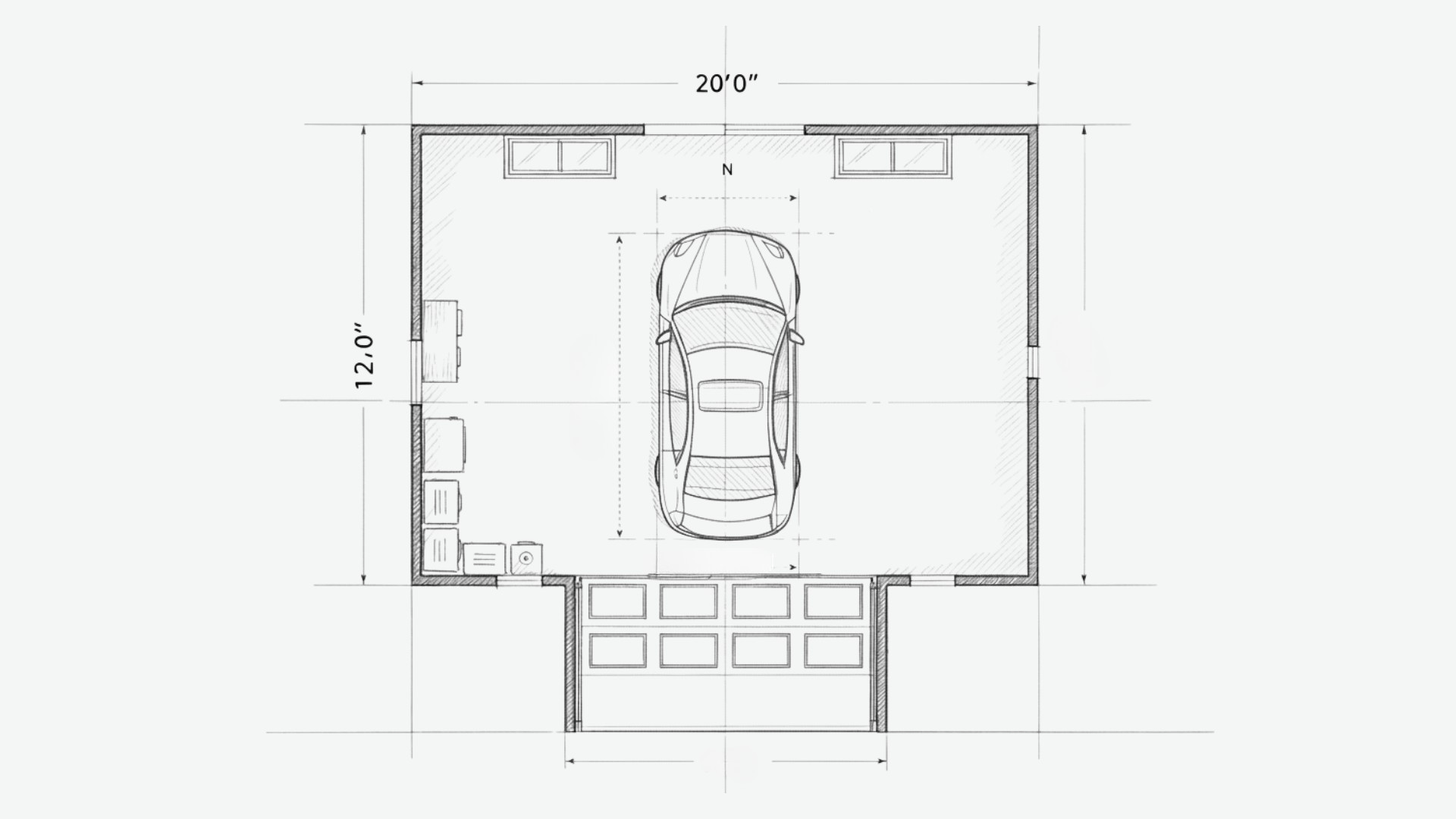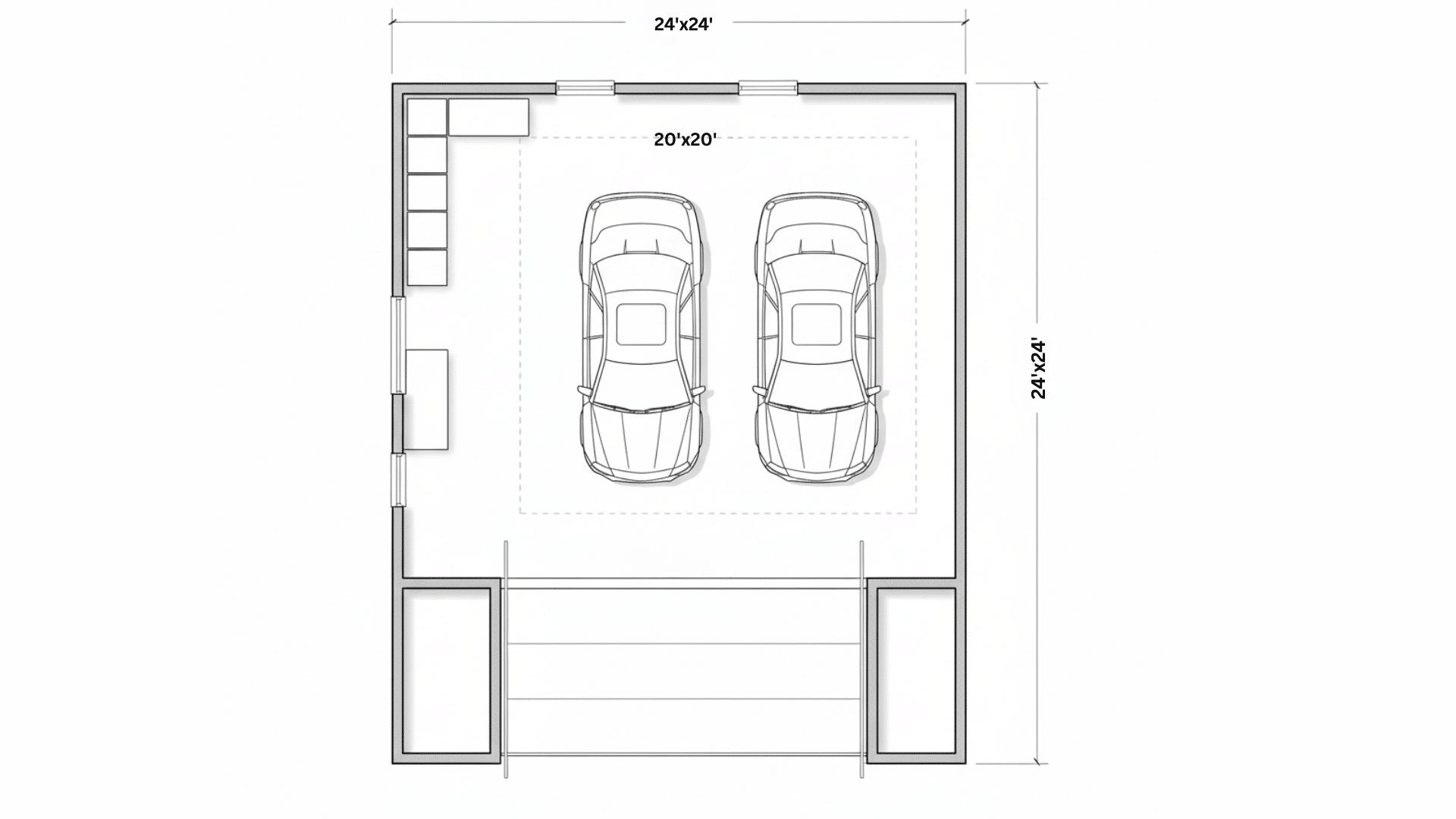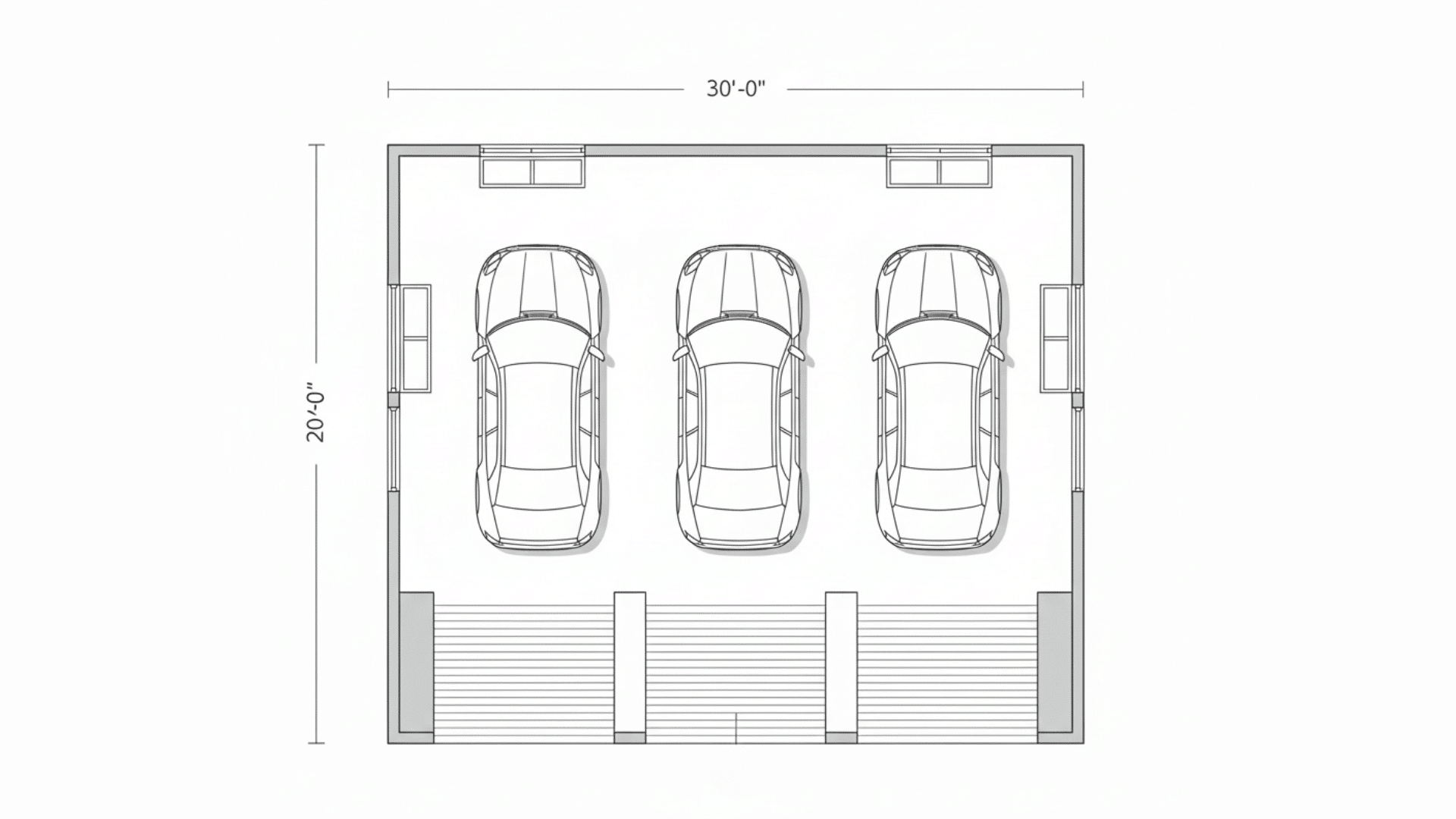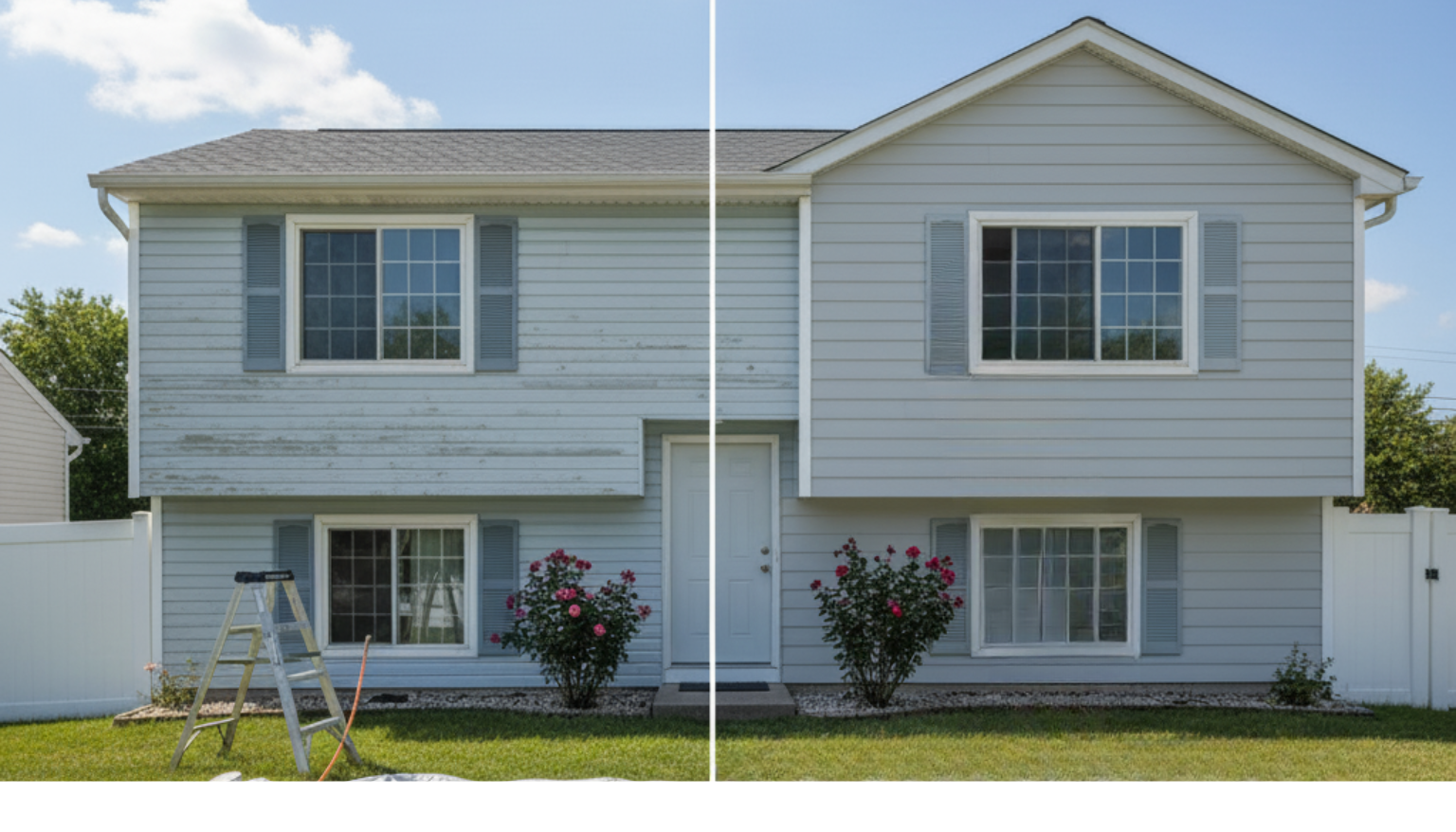You’re ready to build or remodel a garage, but the big question remains: what size should it be?
The choice may seem simple at first, but it quickly becomes complex.
Garages aren’t just about parking; they double as storage spaces, workshops, and long-term investments in home functionality.
Picking the wrong size can lead to cramped spaces, poor storage options, or costly changes down the road.
This guide removes the guesswork by breaking down standard garage sizes, height and door requirements, and critical planning tips.
You’ll also learn about sizing mistakes to avoid, plus smart ways to future-proof your project.
What is a Standard Garage Size?
A standard garage size is typically determined by the number of vehicles you need to park and the amount of extra space you require for storage or other activities.
A one-car garage typically measures approximately 12 feet wide by20–24 feet deep, which works well for smaller or mid-size cars but can feel cramped with SUVs.
A two-car garage is the most common option for families, typically starting at 20×20 feet and often extending to 24×24 feet, providing more space to move around and store belongings.
For households with multiple vehicles, a three-car or larger garage generally ranges from 30×20 to 36×24 feet, providing ample space.
Typical Garage Dimensions by Size Category
Garage sizes vary depending on the number of vehicles, available lot space, and whether you want storage or workshop areas alongside your cars.
1. One-Car Garage

A one-car garage is compact yet functional, ideal for single vehicles and light storage.
While this option is efficient, it can feel tight for SUVs or when adding shelves along the walls.
- Standard size: 12×20 feet
- Wider option: 14 feet for extra comfort
- Best for compact and mid-size cars
2. Two-Car Garage

The most popular choice for suburban homes, a two-car garage balances practicality and storage space.
- Common dimensions: 20×20 to 24×24 feet
- 20×20 fits two cars but leaves limited storage
- 24×24 allows space for shelving, bikes, or a workbench
3. Larger Garages (Three-Car and Beyond)

Bigger garages are designed for households with multiple vehicles or recreational storage needs.
These garages offer maximum convenience, especially for families who want extra space without compromising parking.
- Starts around 30×20 feet for three cars
- Expands to 36×24 feet or larger for four cars
- Great for boats, trucks, or oversized vehicles
Factors Influencing Garage Size Choices
Choosing the right garage dimensions isn’t only about car count; it also depends on lifestyle, storage, and long-term practicality.
- Vehicle size and number: Compact cars need less space than full-size trucks or SUVs.
- Storage and workspace needs: Shelving, bikes, or a workbench require extra room.
- Local building codes and regulations: Always check city or county requirements before finalizing plans.
- Future-proofing: Adding a little extra space today saves costly remodels later.
- Standard garage height: Most garages are 8–9 feet high, with 10–12 feet better for trucks, lifts, and overhead storage.
How to Measure and Plan Garage Size (Including Door Dimensions)
Follow these steps to make sure your garage is sized right for both vehicles and storage.
Step 1: Measure your vehicle(s)
Start by measuring the full length, width from mirror to mirror, and total height. Include extras like roof racks, bike mounts, or cargo boxes, as they add inches and may affect garage ceiling and door clearance.
Step 2: Add clearance space
Once you know your vehicle dimensions, add at least 2–3 feet on each side, plus extra in front and back.
This ensures comfortable parking, safe door opening, and easy walking space.
A little extra clearance now prevents your garage from feeling cramped later.
Step 3: Decide on ceiling height.
A standard garage height is 8–9 feet, suitable for most sedans and smaller SUVs. For trucks, larger SUVs, or if you plan overhead storage or a lift, choosing a 10–12 foot ceiling is a smarter, future-proof option.
Step 4: Select door size
Garage doors should match the width and height needs. A standard single door is 8–9 feet wide and 7–8 feet tall, while double doors are usually 16 feet wide.
Always check that the door height clears your tallest vehicle, especially with racks or raised suspensions.
Step 5: Plan for extras.
Most homeowners use garage space for tools, bikes, or storage, not just cars. Include shelving, workbenches, and walking paths in your layout.
Clear zones improve safety and versatility, making the garage suitable for parking and storage.
When to Go Bigger or Smaller
Sometimes, the standard garage size just isn’t enough, and that’s where custom options come in.
A popular choice is the “one-and-a-half” car garage, which provides extra space for storage, motorcycles, or bikes without committing to a full two-car layout.
Extensions are another solution, adding just a few feet to make parking for larger vehicles and organizing storage much easier. For homeowners with limited lot space, creative designs like L-shaped or tandem garages help maximize every inch.
Going custom is especially beneficial if you own oversized vehicles, want a workshop area, or simply value added flexibility.
Wrapping it Up
Choosing the right garage size is about more than simply parking your car; it’s about ensuring long-term comfort, functionality, and value for your home.
A standard garage size of around 12×20 feet for a single car or 20×20 feet for two cars is a solid starting point for most households, while a standard garage height of 8–9 feet will meet everyday needs.
Still, your decision should reflect more than just averages.
Think about your vehicle type, storage requirements, hobbies, and even future upgrades.
Frequently Asked Questions (FAQ)
1. What is the Ideal Thickness for a Garage Floor?
Typically, garage floors are poured at a thickness of 4 inches with reinforced steel to withstand the weight of vehicles. Thicker slabs may be required for heavy trucks or equipment.
2. Can I Add Insulation to My Garage?
Yes, insulating garage walls and ceilings helps regulate temperature, protects stored items, and improves energy efficiency if the garage is attached to the house.
3. What Type of Garage Door Opener Is Best?
Modern Options include Belt-Driven, Chain-Driven, and Screw-Driven Openers. Belt-driven models are quieter, Suitable for Attached Garages, while chain-driven models are more affordable but Noisier.
4. Should I Include Windows in My Garage?
Windows Provide Natural Light and Ventilation, but May Reduce Wall Space for Storage and Security. Frosted or Elevated Windows Offer Privacy While Allowing Light.
5. Are Electric Vehicle (EV) Charging Stations Compatible with All Garages?
Most garages can accommodate EV chargers with proper electrical upgrades. Planning for space and electrical capacity is essential to meet future EV needs.







